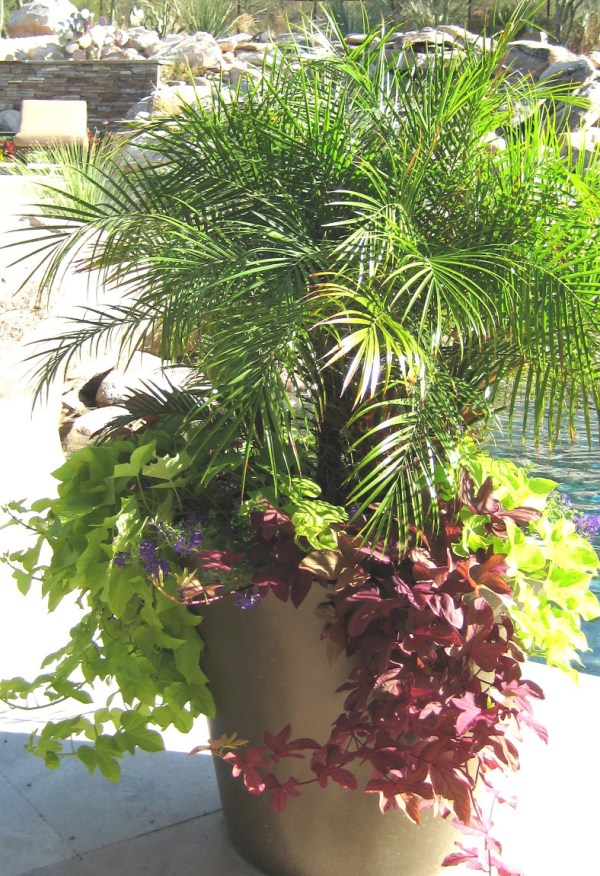Desert-dwellers often wonder which trees they can plant in pots in the sun. Last week, I gave you a list of many varieties, and today, I want to share with you three of my favorites—which provide three distinct additions to the sunny areas of your desert landscape.
Citrus trees, such as the Mexican lime tree (above), are the most requested, because they bear fruit. Citrus trees also have lush evergreen leaves and fragrant blooms in the early spring, making them attractive. The Mexican lime and some kumquats will bloom more than once a year, which means they will bear fruit more than once!
Smaller fruit citrus, such as limes, tangelos and lemons, are the best for pots, as their leaves are better-suited to work with the proportions of the pot. All citrus, except for kumquats, should be put in pots that are at least 26 inches in width. These larger pots will allow trees to stay in them for years (with a root trim every three years or so). Kumquats can go into 18-inch pots if they are purchased when small.
Grapefruit trees should not be planted in pots, due to their larger size and need for more root room. Caution is needed for the improved meyer lemon, as it is a fast grower and can outsize a pot very quickly.
Make sure your citrus tree receives at least six hours of sun, if possible with afternoon shade. Try to place it where it is protected from harsh winds.
If you are interested in a beautiful flowering tree that performs all summer long, look for the crape myrtle (above right). I find it amazing to think that such a delicate flower can withstand our heat and bloom with such vibrant colors—yet it does! These trees should also be placed in 24-inch-wide or larger pots.
Unfortunately, at least in my view, crape myrtles are deciduous and will lose their leaves in the winter. They are susceptible to freeze, which should not be much of a problem here in the Palm Springs area, but if you happen to live in a colder region, be careful.
The robellini palm (below) is my third choice. This tree will give you a tropical feeling when placed in pots around your patio, pool or barbecue area. You may also know this tree as the pygmy date palm or the Phoenix robellini. Since this plant does not like temps dipping much below 50 degrees, it is perfect for the low desert. Planted in warm zones with some protection, it will do well in mid-desert regions, too. These beautiful trees are easy to grow, take an average amount of water, and will provide many years of satisfaction when added to your overall landscape plan.
These three trees will provide you with fruit, flowers and lushness with minimal concern. Just be sure to add water and food!
Marylee Pangman is the founder and former owner of The Contained Gardener in Tucson, Ariz. She has become known as the desert’s potted garden expert. Marylee is available for digital consultations, and you can email her with comments and questions at potteddesert@gmail.com. Follow the Potted Desert at facebook.com/potteddesert.



